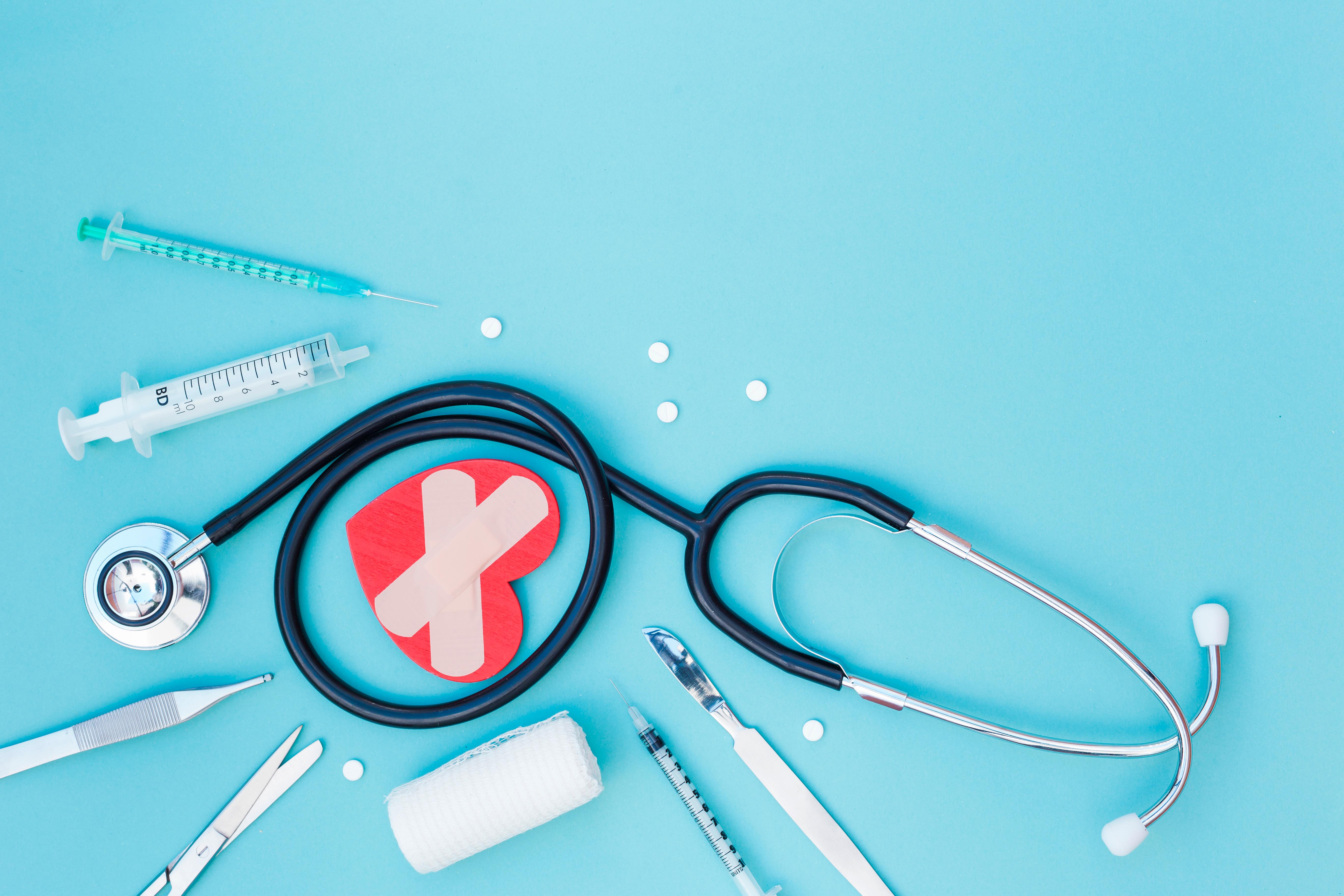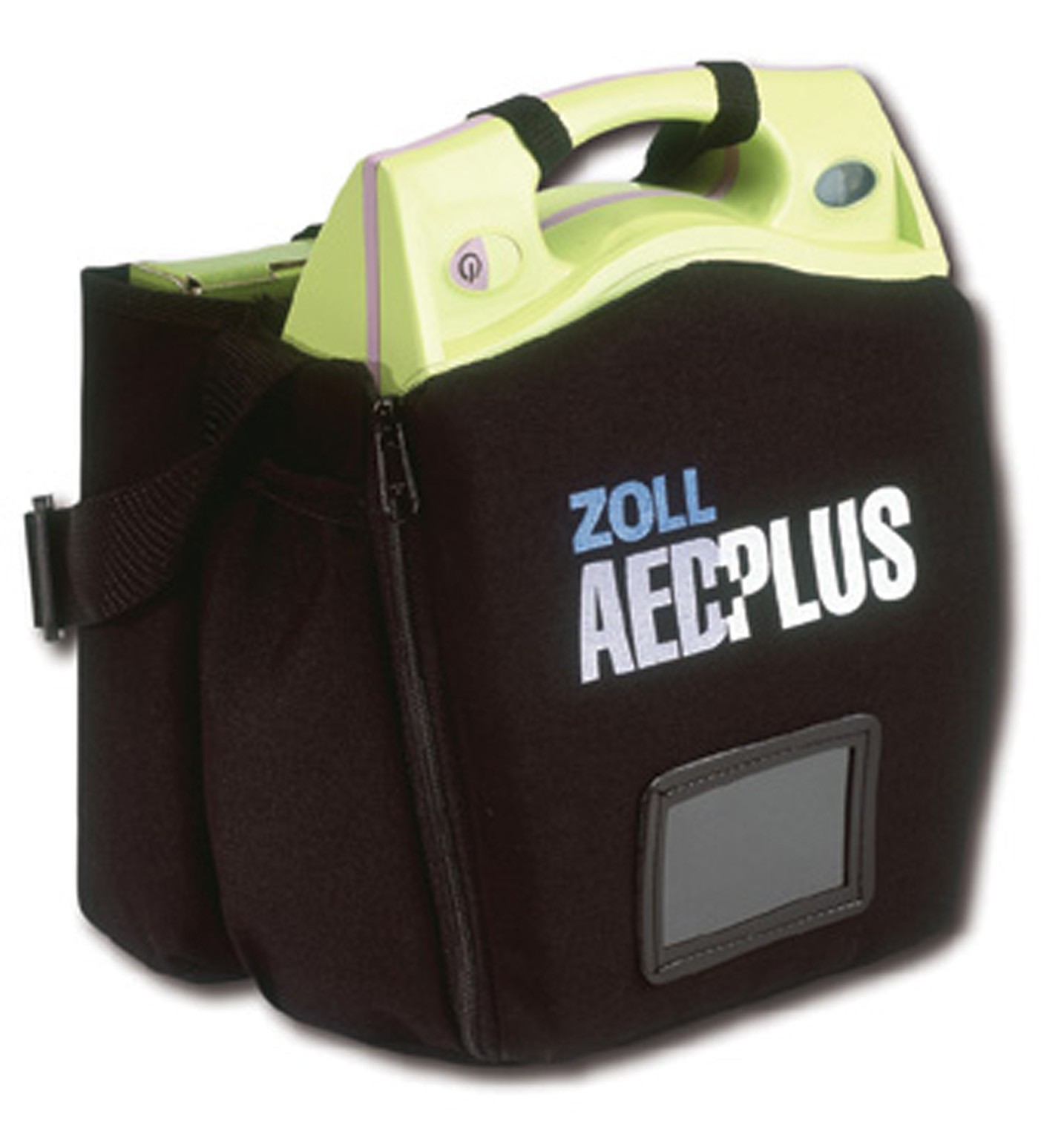
AEDS
ZOLL AED Plus Package with Cabinet
The ZOLL AED Plus is durable, gives CPR feedback in real time, and has a much lower than average maintenance cost because the pads and batteries only need to be changed every 5 years (instead of every 2-4 like most other AEDs on the market).
ZOLL AED Plus Highlights
A one-piece CPR-D Padz electrode for quick, easy application. Pull-tabs expose the conductive gel on each pad only when it is in direct contact with the skin, limiting the chance of gel contamination.
A lid that acts as a "passive airway support" to maintain the patient's open airway.
A back-lit display screen that provides simultaneous text with every audio prompt, and a circle of lighted graphical icons that show what to do.
A display screen that presents the elapsed time and number of shocks delivered, critical information needed by EMS personnel when they arrive.
Real CPR Help. The rescuers can see the chest compressions and the AED can guide them to the required depth and rate.
ZOLL AED Plus Features
Real CPR Help® provides real-time feedback for depth and rate of chest compressions during CPR. The AED Plus® is the ONLY AED that can SEE what you’re doing during CPR and provide audio and text prompts (PUSH HARDER and GOOD COMPRESSIONS) and a visible bar gauge on the display screen for each compression in real time. Real CPR Help does MORE than “CPR coaching.” Other CPR coaches are BLIND, and cannot SEE your CPR.
Once installed, the AED Plus has the LOWEST Total Cost of Ownership. There is nothing to replace or buy for five years because the CPR-D-padz® and batteries last FIVE years, if not used. In ten years you will replace pads and batteries only once for a total cost of $244, an average annual cost of $24.40. And the logistics are simple. Avoid the headache of tracking and replacing pads and batteries every other year.
Powered by 10 Lithium batteries. The Lithium 123A batteries can be purchased at any retail camera store.
Best Ingress Protection rating for dust and water. The AED Plus has an ingress protection (IP) rating of IP55 for dust and water. No other major manufacturer’s AED has a higher rating. This enables placement in ideal locations, allowing quick access to an AED for emergencies that may occur outdoors, near water and moisture, or in dusty environments full of small airborne particles.
The major benefit of the AED Plus?
The best possible support for a rescuer who is trying to save a life. The best AED is not one that is simple. It’s the AED that provides the best support during the rescue.
About CPR
Research shows1 that HALF of all rescues begin with a heart analysis that tells the rescuer “NO SHOCK ADVISED.”
Once you hear this, CPR is the only hope for this victim. If you do high-quality CPR, you may get to push the shock button. Key Question: Will your AED help you do CPR? Will it provide the best help for CPR? If it’s not from ZOLL, it’s BLIND and cannot really help you.
ZOLL believes that an AED that works needs to PROVIDE A SHOCK and SUPPORT CPR. AEDs that can’t SEE your CPR, can’t really help. They don’t really support CPR, and they WON’T WORK when it’s time to do CPR.
When is high-quality CPR needed most? Right after a shock has been delivered! The most important thing CPR does is deliver oxygenated blood to the HEART. A heart that has just been shocked but is not receiving blood from CPR may not make it. Shocking without CPR is like trying to start a car with a good battery, but no gas in the tank. Once you turn the key, it needs GAS! In a rescue, once the shock is delivered, CPR provides the gas.
The AHA’s 2010 Guidelines (pg. S706) show that the chances of survival for a collapsed victim who gets no CPR decreases at 10% per minute. After 10 minutes, without CPR chances for survival are at zero. But with high-quality CPR (at least 100 compressions per minute and at least two inches deep) chances of survival decrease at 4% per minute. After 10 minutes of high-quality CPR, chances of survival are still 60%.
What CPR Does
1. Evacuates blood from a distended heart. When a victim collapses, the arteries stop moving blood, but the veins continue delivering blood to the heart over the next 4 to 5 minutes, as the heart becomes distended (filled with blood but not pumping). Even if the heart is in ventricular fibrillation (VF), it needs CPR to evacuate the blood it has filled up with before a shock can be effective.
2. Moves oxygenated blood to the BRAIN. Helps reduce brain damage, keeps victim alive longer, and leads to improved quality of life if victim survives.
3. Moves oxygenated blood to the HEART. (Most important part of CPR!) Resuscitation requires TWO THINGS: [1] shocking the heart and [2] delivering blood to the heart.
An AED that helps you perform high-quality CPR
Only ZOLL’s AED Plus is equipped with Real CPR Help® technology. A sensor in the pads that attach to the patient lets the AED see each chest compression and lets you know how you’re doing. It guides you, with prompts and a real-time bar gauge, to the recommended depth and rate of compressions.
“Whenever defibrillation is attempted, rescuers must coordinate high-quality CPR with defibrillation.” – 2010 AHA Guidelines, p. S712
How It Works
Our one-piece CPR-D-padz®, which contains a pair of electrodes, senses and reports the motion of the chest compressions to the AED Plus.
Audio and text prompts relay compression quality.
The compression depth bar gauge lets you see the depth of each compression in real time.
The adaptive metronome detects compression rate and guides you to at least 100 per minute.
Technical Specifications
Measuring Chest Compression With Real CPR Help
The force required to depress the chest during CPR varies with the patient’s size and build. The standard measure of chest compression quality, however, is not force but depth. The Real CPR Help® technology in ZOLL’s CPR-D-padz® includes a hand-placement locator, an accelerometer, electronics, and a processing algorithm that work together to measure vertical displacement in space as each compression occurs.
One Size Fits All
ZOLL’s one-piece electrode design accounts for anatomical variation. Based on extensive human data, CPR-D-padz meet the anthropometric chest characteristics of 99% of the population. If needed, the lower (apex) electrode can be separated and adjusted to accommodate the remaining 1% of the population.
Simplified Placement
Affixing two separate electrode pads to the patient’s bare chest can be confusing to a lay rescuer. ZOLL’s CPR-D-padz simplify this step by guiding placement of the red crosshairs at the center of the imaginary line connecting the patient’s nipples. Once in place, the hand-locator and the two electrode pads fall naturally into optimal position for both defibrillation and CPR.
Five Year Shelf Life
All AED electrodes transmit defibrillating electricity into the patient via metal in close contact with a salt-infused gel that is positioned between the metal and the skin. Over time, however, the salt in the gel will corrode the metal and eventually compromise electrode functionality. ZOLL’s novel electrode design includes a sacrificial element that prevents significant corrosion for five years, which is unmatched in the market today.
Kit contents
- ZOLL AED Plus Semi-Automatic with English Instructions
- 7-year warranty on ZOLL AED Plus
- Set of Lithium Batteries
- Carrying Case
- Training DVD
- Fast Response Kit with CPR Pocket Mask/Â scissors/Â gloves)
- Pair of ZOLL CPR-D Padz (5 year life from date of manufacture)
- Alarmed Wall Cabinet
- 3D Wall Sign

